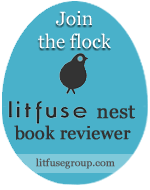I’m a member of the I-Hate-Writing-Synopsis club. Heck, I don’t even like the sound of the word. Synopsis. I think it’s the “nop” in the middle that bothers me most. My mother used to wave a white tissue in my preschool face, asking just before her attack, “Do you have a noppy nose?” I shudder at the memory.
An unpublished novelist complained, “If I could have told the story in five concise pages, then I wouldn’t have wasted 100,000 words.“
You can view the synopsis as a necessary evil or as a wonderful marketing tool. It doesn’t really matter. The truth is if you want to sell your manuscript, you’re going to have to write one. A published author writes a synopsis. If an editor doesn’t like it, then the author doesn’t bother writing a manuscript that won’t sell.
Like any daunting task, whether you’re writing a synopsis or eating an elephant, it’s best to break the chore into manageable pieces.
1. Go through your manuscript chapter by chapter and write down the important plot points (the events and motivations that move the story forward), which happen to the POV characters in your story. This is generally very boring. Don’t worry about it now.
2. Don’t ask questions in hopes of hooking a reader. Editors don’t want to read the manuscript to find out how Penelope escapes the villain. Tell them.
3. Contrary to basic fiction writing, you are encouraged to tell not show.
4. Keep the name of the POV character consistent. Call him Jefferson Smith (not Senator Smith, then Jefferson, then the senator).
5. Only name the POV characters. In a romance, only the hero and heroine need names. Call other characters by their function: the neighbor, boss, son.
6. Limit the use of adjectives or dialog. This is only a summary of the story.
7. Length: varies. Find out what your publisher/editor wants. If you’re uncertain, limit your synopsis to five to ten double-spaced pages, max. Some say one-page/10,000 words. Others can summarize their novel in a snappy two pages.
8. Write in present tense, even if your manuscript isn’t. Jefferson goes to Washington.
9. Reveal your POV characters’ goals, motivations, conflicts, desires and flaws.
10. Highlight the theme, symbolism, and one-line marketing tags.
11. In a romance include: inciting incident, conflict that keeps hero and heroine apart, interest that draws them together, dark moment, and resolution.
12. Go back to step one. Edit the plot summary, only try to sprinkle a little pizzazz. Choose strong nouns and verbs. Make the tone of your synopsis match your writing. A light-hearted romantic comedy? Keep the tone in your synopsis light hearted too. Make the writing shine to entice an editor into reading your first three chapters and to provide your future marketing team with a hot tool they can use to sell your terrific book.
13. If your editor doesn’t require a chapter-by-chapter synopsis, and most don’t, then drop the plot points that aren’t essential to moving the story forward. Concentrate on writing dazzling details of the main events. In a romance, stick to details of the romantic plot, not the subplots.
Once you get the hang of it, you may find that you actually like writing a synopsis. Hard to believe, (yeah, I don’t believe it yet either) but some authors say they do.
~Roxanne Sherwood~

Wednesday, October 8, 2008
The Synopsis -- Your Sales Pitch.
Labels:
fiction,
Roxanne Sherwood,
synopsis
Subscribe to:
Post Comments (Atom)
Blog Archive
-
▼
2008
(209)
-
▼
October
(14)
- Dive In!
- What is Deep Point of View (POV)?
- Top Ten Tips to Avoid Missed Spellings
- Spelchek: Deterent to Akurate Speling
- Not Your English Teacher’s Point of View
- Blog Tour: Love Starts With Elle by Rachel Hauck
- Passion or Imitation?
- Seat-of-the-Pants V. Plotster?
- Too Tired to Edit
- Writing Math
- The Synopsis -- Your Sales Pitch.
- Tools You Can Use: Improve Grammar, Punctuation an...
- Building Your Author Platform
- The Screenplay: A New Opportunity
-
▼
October
(14)
Contributors
Blog Roll
teawithtiffanycelestepalermo
chipmacgregor
cba-ramblings
sirimitchell
susielarsonblog
canblog
thewritermama
writingmotherhood



Represented by Rachelle Gardner





1 comment:
Highlight the theme, symbolism, and one-line marketing tags.
I think I've got that covered, the problem is my life is just a synopsis of oneliners and highlights, could you write some depth to my POV characters?
Sue
ps what's pov?
Post a Comment